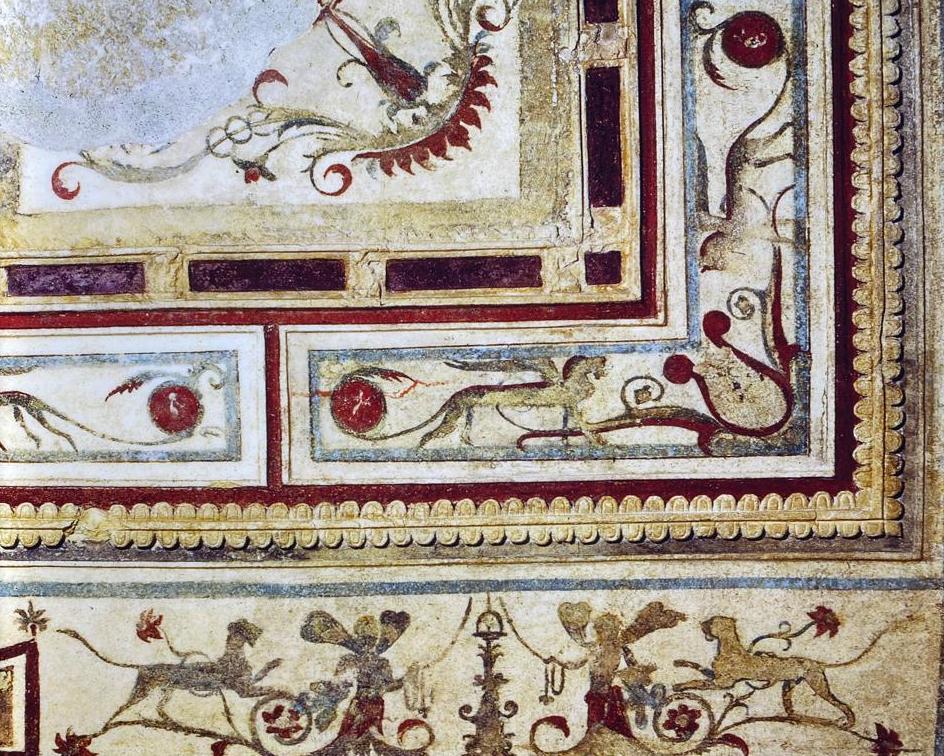The Fabrication of Antiquity during the Renaissance
H18:30-20:00
I pomeriggi series 2021/2022
Entrance: Via Liguria 20
H18:30-20:00
I pomeriggi series 2021/2022
Entrance: Via Liguria 20
The event will be held in Italian and English and it will take place at H18:30 in Rome and online.
Please register here to attend in Rome.
Please register here to follow the roundtable on Zoom.
I pomeriggi series 2021/2022
I pomeriggi 2021/2022 at Istituto Svizzero is a series dedicated to our fellows. It is an opportunity for the public to learn more about the projects they are working on during this year’s residency.
The event is curated by Mathilde Jaccard (Fellow Roma Calling 2021/2022).
The Fabrication of Antiquity during the Renaissance
Antiquity was not only imitated or copied during the Renaissance. It was shaped according to an ideal or a political agenda. The representation of Antiquity did not correspond to the archeological reality but was an invention as a projection.
The roundtable will explore these issues through a few questions. Firstly, not all eras and types of antiquity were source of inspiration. Which type of antiquity was used by which type of Renaissance? Secondly, how discoveries had an impact on art? Although during Renaissance there was a consciousness of the temporal separation between those times and Antiquity, there was also a wish to erase any marks of the passage of time. How did past and present coexist? How important was the notion of falsification?
Participants:
Claudia Cieri Via (Sapienza University of Rome) is Full Professor at the Sapienza University of Rome in History and Theory of Art at the Department of Art History since 2009, Senior Research Fellows at the Scuola Superiore della Critica d’Arte of the Sapienza since 2012. She was Visiting Professor at many universities, such as Université Paris 1 Panthéon-Sorbonne (2000) or Northwestern University in Chicago (2001-2007). She devoted part of her research to Ovid’s Metamorphoses as to mythology in arts, what led to the project ICONOS, an on-line database, and to the publication, among others, of the volume called L’arte delle Metamorfosi: Decorazioni mitologiche nel Cinquecento (2003). She wrote about several artists, including Piero di Cosimo, Andrea Mantegna and Leonardo da Vinci. She is also the author of numerous publications on Aby Warburg’s work and its reminiscence nowadays. One of her latest projects is the exhibition Venere Divina: Armonia sulla terra at the Palazzo del Te in Mantova (2021).
Marco Brunetti (Bibliotheca Hertziana) is a PostDoc Fellow working on Renaissance drawings of Roman antiquities and Renaissance topography of Rome. He studied Classics, Classical Philology and Classical Archaeology at the University of Bologna. After a Post-graduated School of Archaeology and Archival Studies (2016), he defended his PhD dissertation on Renaissance drawings of the Domus Aurea, with a specific focus on the Volta Dorata, at the IMT-Lucca in 2020. His latest publication is an article in the Papers of the British School at Rome, Philip II of Spain and Trajan: History of a special undelivered gift and of the Reception of Trajan’s column (2021).
Mathilde Jaccard (University of Geneva/Istituto Svizzero) is a PhD student as part of the SNSF project Restoration as Fabrication of Origins (2019-2023). She holds a Bachelor of Arts in Art History and Cultural Anthropology from the University of Basel (2017). She defended her Master thesis under the supervision of Prof. Victor Stoichita at the University of Fribourg (2019). Her current research focuses on the Etruscan heritage in Tuscany during the 15th and 16th centuries. This led to the publication of an article in the journal Anabases, De Déjanire à Vénus: à propos du réemploi d’un modèle en faux antique étrusque (2021).
Find out more about Mathilde Jaccard’s project, read her latest contribution on the blog of Istituto Svizzero on the website of the Swiss daily newspaper Le Temps.

Access is allowed only to those who obtained the Reinforced Green Pass health certificate, which proves vaccination or recovery. It is mandatory to wear a Ffp2 face mask within our spaces.
Domus Aurea, detail
Divinità fluviale
Laocoonte